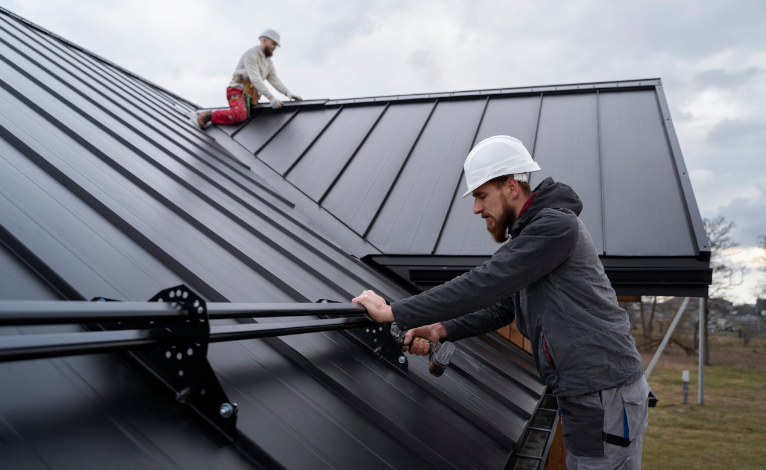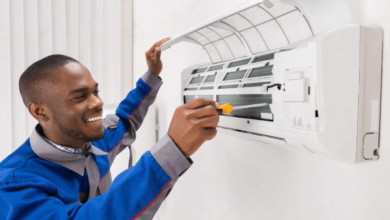Top Trends in Commercial Roofing Austin: What to Expect in 2025

Table of Contents
Sustainable Roofing Solutions
It’s pretty clear that sustainability is no longer a niche trend; it’s becoming a core expectation, especially in capital city roofing and commercial roofing austin. In 2025, expect to see even more emphasis on eco-friendly roofing options. People are really starting to care about the environmental impact of their buildings, and that includes the roof.
Green Roof Installations
Green roofs, which are roofs covered in vegetation, are gaining traction. They offer a bunch of benefits, like reducing stormwater runoff, improving air quality, and even lowering building temperatures. The initial cost can be higher, but the long-term savings and environmental perks make them attractive. Plus, they look pretty cool. I saw one downtown last week, and it was like a little oasis on top of a building.
Recyclable Materials
Using recyclable materials in roofing is another big trend. Think about metal roof Austin options made from recycled steel or aluminum, or even shingles made from recycled plastics. These materials reduce waste and lower the carbon footprint of construction projects. It’s a win-win. The challenge is often ensuring these materials are durable and cost-effective, but technology is improving all the time.
Energy-Efficient Systems
Energy-efficient roofing systems are designed to reduce energy consumption by reflecting sunlight and lowering cooling costs. Cool roofs, for example, use reflective materials to keep buildings cooler in the summer. This not only saves money on energy bills but also reduces the urban heat island effect. I’ve heard some companies are even integrating solar panels directly into the roofing material, which is pretty neat.
Switching to sustainable roofing isn’t just about being environmentally responsible; it’s also about saving money in the long run and increasing the value of your property. With rising energy costs and increasing environmental awareness, sustainable roofing solutions are becoming a smart investment for any building owner.
Technological Advancements in Roofing
The world of commercial roofing Austin is changing fast, and technology is a big reason why. By 2025, expect to see even more tech integrated into how roofs are inspected, maintained, and even built. It’s not just about making things easier; it’s about making them more efficient and cost-effective for businesses.
Drones for Inspections
Drones are already making waves in capital city roofing, but their use will become even more widespread. Instead of sending someone up on a ladder, drones can quickly and safely inspect large commercial roofs. They can take high-resolution photos and videos, spotting potential problems like leaks or damage before they become major headaches. This means faster inspections, reduced risk for workers, and more accurate assessments of roof conditions. Plus, the data collected can be used to create detailed reports and track changes over time.
Smart Roofing Systems
Smart roofing systems are all about using sensors and data to optimize roof performance. These systems can monitor things like temperature, moisture levels, and even structural integrity. This information can then be used to adjust things like ventilation and drainage, helping to prevent problems and extend the life of the roof. Imagine a system that automatically adjusts drainage based on rainfall forecasts, or one that alerts you to potential leaks before they cause serious damage. It’s like having a built-in roof doctor that’s always on the job. For metal roof Austin, this could mean optimizing cooling during the hot summer months.
3D Printing Applications
3D printing might sound like something out of a sci-fi movie, but it’s starting to find its way into the construction industry, including roofing. While we’re not quite at the point of printing entire roofs, 3D printing can be used to create custom roofing components, like tiles or flashing. This can be especially useful for complex or unusual roof designs, where traditional methods might be difficult or expensive. It also allows for more precise and efficient manufacturing, reducing waste and lead times. It’s still early days, but 3D printing has the potential to revolutionize how roofs are built and repaired.
The integration of technology into commercial roofing is not just a trend; it’s a necessity. As businesses look for ways to reduce costs, improve efficiency, and minimize risk, these technological advancements will become increasingly important. Embracing these changes will be key to staying competitive in the ever-evolving roofing industry.
Regulatory Changes Impacting Roofing
It’s a fact of life that regulations are always changing, and that definitely applies to commercial roofing Austin. Keeping up with these changes is super important for any capital city roofing project. What was okay last year might not fly in 2025, so let’s look at what’s coming.
Building Codes Updates
Building codes are the foundation of safe and sound construction. In Austin, these codes are regularly updated to reflect new technologies, materials, and safety concerns. For commercial roofing, this means stricter requirements for things like wind resistance, fire ratings, and energy efficiency. Expect to see more emphasis on using materials that can withstand the intense Texas weather. It’s not just about slapping on a roof; it’s about making sure it lasts and protects the building and its occupants. For example, the city might require thicker insulation or specific types of fasteners to meet new standards. Staying informed about these changes is key to avoiding costly rework and ensuring compliance.
Environmental Regulations
Environmental regulations are becoming increasingly important, and roofing is no exception. There’s a growing push for sustainable building practices, which translates to stricter rules about the materials used and the waste generated during roofing projects. Expect to see more requirements for recycling old roofing materials and using eco-friendly alternatives. For example, the city might offer incentives for using cool roofing options or require the use of low-VOC adhesives. This also impacts metal roof Austin projects, as the sourcing and disposal of metal materials are under scrutiny. It’s all about reducing the environmental footprint of construction and promoting a greener future.
Safety Standards Enhancements
Safety is always a top priority, and roofing is a dangerous job. Expect to see enhancements to safety standards aimed at protecting workers on the job site. This could include stricter requirements for fall protection, hazard communication, and training. For example, the city might require all roofing contractors to have a comprehensive safety plan in place and to conduct regular safety audits. These changes are designed to reduce the risk of accidents and injuries and to ensure that roofing projects are completed safely and efficiently.
Keeping up with these regulatory changes can be a challenge, but it’s essential for any commercial roofing Austin project. By staying informed and working with experienced contractors, you can ensure that your roofing project meets all applicable requirements and is completed safely and efficiently.
Innovative Roofing Materials
Cool Roofing Options
Cool roofing is becoming a big deal, especially with summers getting hotter. These materials are designed to reflect more sunlight and absorb less heat than standard roofing. This can significantly reduce the temperature of the roof surface, which in turn lowers the amount of heat transferred into the building. For commercial buildings in Austin, this means lower energy bills and a more comfortable indoor environment.
- Reflective paints and coatings
- Specialized tiles and shingles
- Membrane roofing with high solar reflectance
Reflective Coatings
Reflective coatings are another way to keep buildings cool. These coatings are applied to existing roofs to increase their reflectivity. They’re a cost-effective solution for building owners who want to improve energy efficiency without replacing the entire roof. Plus, they come in a variety of colors, so you don’t have to stick with just white. “capital city roofing” is seeing more demand for these as building owners look for ways to save money on energy costs.
Reflective coatings not only help reduce energy consumption but also extend the lifespan of the roof by protecting it from UV damage and thermal stress. This makes them a smart investment for any commercial property owner.
Durable Synthetic Materials
Synthetic roofing materials are gaining popularity because they offer a combination of durability and aesthetic appeal. These materials are designed to mimic the look of natural slate, wood, or tile, but they’re much lighter and more resistant to damage from weather, pests, and fire. For “commercial roofing austin”, this is a great option for buildings that want a high-end look without the high-end maintenance. Some synthetic options are even made from recycled materials, adding to their appeal. Many people are looking into “metal roof Austin” options, but these synthetics are a good alternative.
Here’s a quick comparison of some synthetic roofing materials:
| Material | Lifespan (Years) | Weight (lbs/sq ft) | Cost (per sq ft) |
| Synthetic Slate | 50+ | 6-8 | $8-12 |
| Synthetic Wood | 30-50 | 4-6 | $6-10 |
| Synthetic Tile | 50+ | 8-10 | $9-14 |
The development and adoption of these materials are changing the landscape of commercial roofing.
Market Demand and Economic Factors
Impact of Local Economy
The strength of the Austin economy plays a huge role in the demand for commercial roofing. When businesses are doing well, they’re more likely to invest in new buildings or renovations, which directly translates to more commercial roofing projects. A booming economy often means more construction, and that means more work for companies specializing in “commercial roofing austin”. The opposite is also true; economic downturns can lead to project delays or cancellations. This affects everyone from the suppliers of “metal roof Austin” to the “capital city roofing” contractors.
Commercial Real Estate Trends
The trends in commercial real estate are a key indicator of roofing demand. Are we seeing more office buildings, retail spaces, or industrial facilities being built? Each type of building has different roofing needs. For example, a large warehouse might opt for a simple, cost-effective metal roof, while a high-end office building might choose a more aesthetically pleasing and energy-efficient option. The rise of mixed-use developments also presents unique challenges and opportunities for roofing contractors. Understanding these trends is vital for forecasting future demand.
Insurance and Financing Changes
Changes in insurance policies and financing options can significantly impact roofing decisions. If insurance companies start offering better rates for buildings with certain types of roofs (like those that are more durable or energy-efficient), it could drive demand for those materials. Similarly, if it becomes easier or more affordable for businesses to finance roofing projects, we might see an increase in renovations and upgrades. Keep an eye on these financial factors, as they can shift the market in unexpected ways.
The availability of financing and the specifics of insurance coverage can often be the deciding factor for businesses when choosing between a simple repair and a full roof replacement. This is especially true for smaller businesses that may not have large capital reserves.
Aesthetic Trends in Commercial Roofing
It’s not just about keeping the rain out anymore. What a roof looks like is becoming a bigger deal, especially in a place like Austin. People want buildings that look good, and the roof is a big part of that. For commercial roofing Austin, expect to see more focus on how the roof contributes to the overall design.
Architectural Styles
Roofs are starting to follow the architectural style of the building more closely. If it’s a modern building, you might see a sleek, flat roof with clean lines. For something more traditional, maybe a sloped roof with some texture. The goal is for the roof to complement the rest of the building, not just sit on top of it. This is especially true in a capital city roofing environment where aesthetics can significantly impact property value and appeal.
Color and Texture Preferences
Gone are the days of just plain gray or black roofs. Now, there’s a lot more interest in different colors and textures. Lighter colors are popular because they reflect sunlight and can help keep the building cooler. Texture can add some visual interest and make the roof stand out. For example, a metal roof Austin doesn’t have to be just a flat sheet of metal; it can have different patterns or finishes.
Integration with Building Design
Roofs are becoming more integrated into the overall building design. This means thinking about the roof from the very beginning of the project, not just as an afterthought. Some buildings are even incorporating green roofs or rooftop gardens, which can add a lot of visual appeal and also provide some environmental benefits.
Integrating the roof into the building’s design is becoming increasingly important. It’s not just about functionality anymore; it’s about creating a cohesive and visually appealing structure.
Here are some trends we’re seeing:
- More use of reflective materials to reduce heat.
- Incorporating solar panels seamlessly into the roof design.
- Using different textures to add visual interest.
Maintenance and Longevity Practices
Preventative Maintenance Programs
Okay, so you’ve got a new roof on your commercial building in Austin. Great! But don’t just forget about it. Think of it like your car – you need to do regular maintenance to keep it running smoothly. Preventative maintenance programs for commercial roofing Austin are becoming super common. These programs usually involve regular inspections, cleaning, and minor repairs to catch small problems before they turn into huge, expensive headaches. For example, a good program might include checking for leaks, clearing debris, and inspecting flashing around chimneys and vents. It’s all about being proactive.
Roofing Life Cycle Management
Roofing life cycle management is basically planning for the long haul. It’s about understanding how long your roof is expected to last, what factors might shorten its lifespan (like crazy Austin weather), and how to budget for eventual repairs or replacement. A well-managed roof can save you a ton of money in the long run.
Here’s a simple example of how you might think about it:
| Stage | Description | Activities of course, it’s always a good idea to consult with capital city roofing experts to get a tailored plan for your specific roof type and building needs.
Regular inspections are key. Catching small issues early can prevent them from becoming major problems that require extensive and costly repairs. Think of it as preventative medicine for your roof.
Repair vs. Replacement Strategies
So, your roof has a problem. Now what? Do you repair it, or do you replace it? That’s the big question. Here are some things to consider:
- Age of the roof: If your roof is nearing the end of its expected lifespan, replacement might be the better option.
- Extent of the damage: Small leaks or minor damage can often be repaired. But widespread damage might indicate a bigger problem.
- Cost: Get quotes for both repair and replacement. Sometimes, the cost of repeated repairs can add up to more than the cost of a new roof.
- Future plans: If you’re planning to sell the building soon, a new roof can be a selling point. If you’re staying put, consider the long-term benefits of a new, more energy-efficient roof.
For example, if you have a metal roof Austin that’s only a few years old and has a small leak, a repair is probably the way to go. But if you have an older roof with multiple leaks and signs of wear and tear, replacement might be the more sensible choice. Always get a professional opinion from a trusted commercial roofing Austin contractor before making a decision.
Wrapping It Up
So, looking ahead to 2025, the commercial roofing scene in Austin is shaping up to be pretty interesting. We’re seeing more focus on sustainability, which is great for the environment and can save businesses money in the long run. Plus, with new materials and tech coming into play, roofs are getting stronger and smarter. It’s all about keeping up with the times and making sure buildings are ready for whatever comes next. If you’re in the market for a new roof or just curious about what’s out there, it’s a good idea to stay informed. The trends we talked about are just the tip of the iceberg, and who knows what else is on the horizon? Keep your eyes peeled!
Meta Description
Explore the top trends in commercial roofing Austin for 2025, from sustainability to innovative materials.





